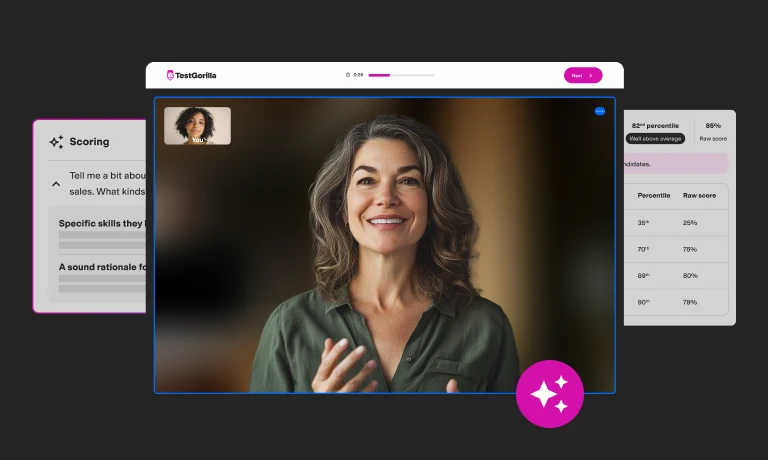Job descriptions and job postings may sound like the same thing, but not knowing the specifics of each can have a negative impact on your ability to hire the right person for your team.
Though these terms are often used interchangeably, they actually describe two separate, yet equally important functions of recruitment. Learning how and when to use each one improves your hiring process by creating a clearer picture of who you’re looking for, enabling you to attract higher-quality candidates.
In this article, we explain the difference between a job description and a job posting and how to use each during recruitment. Let’s dive in.
What is a job description?
A job description, as the name implies, is a written document that fully describes a role within your company. This description typically includes the job’s responsibilities, expectations, KPIs or metrics, daily tasks, and more.
A job description can also include any additional useful context about the role, such as:
Whether or not the position is a new one for the company. For example, is it filling a skills gap?
Justification for hiring and the projected impact of the role on the business, like broadening customer reach or driving new sales.
A timeline for output and/or performance milestones, such as six-month sales goals or new skills attainment.
Job descriptions are important because they can help team members stay aligned with what’s expected of them and perform well in their roles.
What is a job posting?
A job posting is used for promoting your company’s open positions and is often shared on job boards and company careers pages.
It includes a brief description of the role and its responsibilities plus details that job seekers are curious about, like benefits, information about your company, and qualifications required.
The best insights on HR and recruitment, delivered to your inbox.
Biweekly updates. No spam. Unsubscribe any time.
Differences between job description and job posting
When talking about job descriptions and job postings, there’s one key difference to keep in mind: job descriptions are typically internal, and job postings are external. However, job descriptions can be condensed and included as part of a job posting.
Job descriptions are used by internal teams to fully define the scope of roles within the company. They detail the day-to-day responsibilities of a role, the skills required to be successful, and the markers of success within that position.
Job postings are external. You can think of a job posting like an advertisement that helps to get people interested in your company and your open role. Because of that, they’re typically more of a brief summary of the job description with additional information for candidates.
To sum it up: A job description is a technical and comprehensive document. A job posting contains a summarized version of the job description and is a more concise marketing tool that is published far and wide to promote your open role.
Job description vs job posting: Uses in recruitment
Both job descriptions and job postings play valuable roles in the hiring process.
Job descriptions help you pinpoint who you’re looking for
Job descriptions set out the details of an existing role that you need filled, or as mentioned, even make the case for creating a new position at the company.
Since the job description describes the day-to-day functions of a role and outlines the metrics for success, you can also use it to help with candidate evaluation. For example, learn how candidates would react in certain on-the-job situations by using it to craft behavioral and structured interview questions.
Job descriptions also serve as a reference regarding what skills your ideal candidate should have. Pre-employment testing platforms, like TestGorilla, can be used in the early recruitment stages to avoid mis-hiring.
Job postings help you attract ideal candidates
Job postings are equally crucial and are needed to attract candidates to your open roles. They should describe the role in an enticing and promotional way, giving candidates an idea of your company’s culture and values.
Job descriptions can be used to craft job postings, but the main goal of a job posting is to briefly outline the role and create engagement, providing candidates with a window into your company and ultimately helping you build a large talent pool.
Improve your recruitment process with TestGorilla
Though similar, job descriptions and job postings are two different pieces of the recruitment puzzle.
Job postings (which contain summarized job descriptions) are used externally, with the main goal of attracting candidates. Full job descriptions are generally internal documents that set out the specifics of a role in more detail. Both are important tools for creating a strong hiring process and finding the right person for your team.
After defining the person you’re looking for and attracting applicants to your open role, pre-employment testing can help you evaluate candidates in a comprehensive and objective way. Use TestGorilla’s library of 300-plus tests to easily measure skills, abilities, and behavioral traits.
Learn more about TestGorilla by taking a product tour or signing up for a free account.
You've scrolled this far
Why not try TestGorilla for free, and see what happens when you put skills first.


















